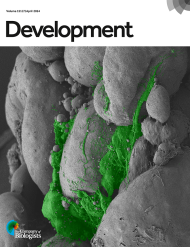Anxiety-like behaviors in mice unmasked: Revealing sex differences in anxiety using a novel light-heat conflict test
Posted on: 11 October 2022
Preprint posted on 5 September 2022
Categories: animal behavior and cognition, neuroscience
Bakcground
Several methods were developed for evaluating anxiety-like behavior in mice in the past
decades. Some tests are based on exploratory behavior, while others require social interactions
or reactions to novel stimuli (see review: (Rotzinger et al. 2010). Among the exploratory tests
for anxiety, the elevated plus maze (EPM), elevated zero maze (both for fear of heights and
open space; open-field (fear of open space) and light-dark box (fear of light) are the most
common. These methods were verified by the use of known anxiolytics and anxiogenics in
different mouse strains. For example, human anxiolytics, such as chlordiazepoxide, sodium
pentobarbital and ethanol proved to be anxiolytics in mice as well in the EPM test (Lister 1987).
Chronic pain may induce anxiety and depression, both in rodents and humans (Kremer et al.
2021), but the underlying mechanisms are not completely understood. Our knowledge about
the relationship between anxiety-like behavior and acute pain in mice and reliable methods to
study this relationship are also limited (Conceicao et al. 1992). The authors of this preprint have
developed and described the Thermal Increments Dark-Light (TIDAL) conflict test, as a novel
method for assessing anxiety-and pain-related behavior simultaneously in mice.
Key findings
8-12 weeks old male and female C57BL/6J mice were used in the TIDAL experiments.
The TIDAL conflict test described in this preprint is a modified Thermal Place Preference test
(TPP, Ugo Basile, Cat. No. 35250). The original TPP test was designed to integrate learned
responses to hot or cold stimuli, with two equally-illuminated chambers (see photos):
https://ugobasile.com/products/categories/pain-and-inflammation/thermal-place-preferencetpp-test-for-mice-rats-1
In the TIDAL test, one of the chambers is illuminated and maintains 31°C, while the other
chamber is dark and the temperature is manipulated from 31°C to 52°C or 31°C to 44°C. In this
setup, the anxiety was placed in “conflict” with gradually increasing temperature.
Sex differences were revealed in the TIDAL conflict test.
In the first TIDAL preliminary test, the dark plate was heated to 52°C during the session. Both
female and male mice spent less than 10% of time on the dark plate at 49 and 52°C. These
temperatures were considered too high and not used in the following sessions.
In the simple light-dark test (without heating), significant differences between males and
females were not observed. In the refined TIDAL conflict test, females on TIDAL vs. TPP
showed an increased preference for the gradually heated, dark chamber over the illuminated
chamber kept at 31°C, when compared to males.
Two weeks later, the same mice were subjected to the light-dark test again with the same
conditions as before. Females showed a higher preference for the dark chamber compared with
males over the two sessions (two-way RM ANOVA, main effect of sex F1,9=14.58, p < 0.005)
in the simple light-dark test (without heating).
Similar to the first TIDAL conflict test, females preferred the heated dark chamber over the
illuminated chamber, especially at 40°C.
In summary, females exhibited increased anxiety-like behavior in the TIDAL conflict test
compared with males, despite the noxious heat in the dark chamber.
Why I liked this preprint
It is a really huge challenge to develop a novel method for assessing anxiety-like behavior in
mice and this preprint represents a good attempt.
Questions for the authors
1. Estrous cycle stages have a great impact on the behavior of rodents (reference for light-dark
box and estrous cycles: (Carey et al. 1992). Which estrous cycle stage did you pick for the
experiments described in this preprint?
2. Different mouse strains may exhibit different pain-response behavior (Mogil et al. 1999).
Are you planning to verify your data with other commonly used strains?
3. What is your plan to identify the neural circuits in the CNS are involved in the TIDAL conflict
test?
4. Did you consider this TIDAL conflict test as a product development of TPP? Would you
perhaps collaborate with the manufacturer of the TPP test?
References
Carey M.P., Billing A.E. & Fry J.P. (1992) Fluctuations in responses to diazepam during the oestrous
cycle in the mouse. Pharmacol Biochem Behav 41, 719-25.
Conceicao I.M., Maiolini Junior M., Mattia N., Vital M.A., Santos B.R., et al. (1992) Anxiety-induced
antinociception in the mouse. Braz J Med Biol Res 25, 831-4.
Kremer M., Becker L.J., Barrot M. & Yalcin I. (2021) How to study anxiety and depression in rodent
models of chronic pain? European Journal of Neuroscience 53, 236-70.
Lister R.G. (1987) The use of a plus-maze to measure anxiety in the mouse. Psychopharmacology
(Berl) 92, 180-5.
Mogil J.S., Wilson S.G., Bon K., Lee S.E., Chung K., et al. (1999) Heritability of nociception I: responses
of 11 inbred mouse strains on 12 measures of nociception. Pain 80, 67-82.
Rotzinger S., Lovejoy D.A. & Tan L.A. (2010) Behavioral effects of neuropeptides in rodent models of
depression and anxiety. Peptides 31, 736-56.
doi: https://doi.org/10.1242/prelights.32862
Read preprintSign up to customise the site to your preferences and to receive alerts
Register hereAlso in the animal behavior and cognition category:
Blue appendages and temperature acclimation increase survival during acute heat stress in the upside-down jellyfish, Cassiopea xamachana
Maitri Manjunath
Experience-dependent plasticity of a highly specific olfactory circuit in Drosophila melanogaster
T. W. Schwanitz
Behavioral screening of conserved RNA-binding proteins reveals CEY-1/YBX RNA-binding protein dysfunction leads to impairments in memory and cognition
Chee Kiang Ewe
Also in the neuroscience category:
Sexually dimorphic role of diet and stress on behavior, energy metabolism, and the ventromedial hypothalamus
Jimeng Li
Enhancer-driven cell type comparison reveals similarities between the mammalian and bird pallium
Rodrigo Senovilla-Ganzo
Autism gene variants disrupt enteric neuron migration and cause gastrointestinal dysmotility
Rachel Mckeown
preLists in the animal behavior and cognition category:
9th International Symposium on the Biology of Vertebrate Sex Determination
This preList contains preprints discussed during the 9th International Symposium on the Biology of Vertebrate Sex Determination. This conference was held in Kona, Hawaii from April 17th to 21st 2023.
| List by | Martin Estermann |
Bats
A list of preprints dealing with the ecology, evolution and behavior of bats
| List by | Baheerathan Murugavel |
FENS 2020
A collection of preprints presented during the virtual meeting of the Federation of European Neuroscience Societies (FENS) in 2020
| List by | Ana Dorrego-Rivas |
Also in the neuroscience category:
‘In preprints’ from Development 2022-2023
A list of the preprints featured in Development's 'In preprints' articles between 2022-2023
| List by | Alex Eve, Katherine Brown |
CSHL 87th Symposium: Stem Cells
Preprints mentioned by speakers at the #CSHLsymp23
| List by | Alex Eve |
Journal of Cell Science meeting ‘Imaging Cell Dynamics’
This preList highlights the preprints discussed at the JCS meeting 'Imaging Cell Dynamics'. The meeting was held from 14 - 17 May 2023 in Lisbon, Portugal and was organised by Erika Holzbaur, Jennifer Lippincott-Schwartz, Rob Parton and Michael Way.
| List by | Helen Zenner |
ASCB EMBO Annual Meeting 2019
A collection of preprints presented at the 2019 ASCB EMBO Meeting in Washington, DC (December 7-11)
| List by | Madhuja Samaddar et al. |
SDB 78th Annual Meeting 2019
A curation of the preprints presented at the SDB meeting in Boston, July 26-30 2019. The preList will be updated throughout the duration of the meeting.
| List by | Alex Eve |
Autophagy
Preprints on autophagy and lysosomal degradation and its role in neurodegeneration and disease. Includes molecular mechanisms, upstream signalling and regulation as well as studies on pharmaceutical interventions to upregulate the process.
| List by | Sandra Malmgren Hill |
Young Embryologist Network Conference 2019
Preprints presented at the Young Embryologist Network 2019 conference, 13 May, The Francis Crick Institute, London
| List by | Alex Eve |











 (No Ratings Yet)
(No Ratings Yet)